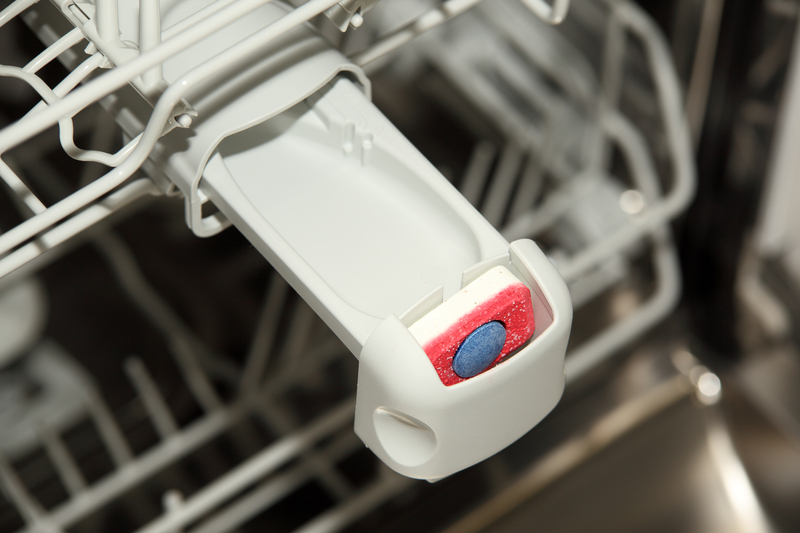Home Tips for Keeping Your Stovetop Free of Burnt-On Buildup
Posted on 26/08/2025
Home Tips for Keeping Your Stovetop Free of Burnt-On Buildup
If you love cooking at home, you know how quickly a clean stovetop can turn into a mess of burnt-on food and grime. Food splatters, boil-overs, and daily use all lead to the accumulation of sticky, stubborn residues. Learning how to prevent stovetop buildup and keep your kitchen surfaces sparkling is essential for both hygiene and kitchen aesthetics. In this comprehensive article, we'll share proven home tips for maintaining a spotless stovetop, ensuring longevity and keeping your cooking area a joy to use.

Why Burnt-On Buildup Forms on Stovetops
Understanding the reasons behind burnt-on buildup helps you prevent it more effectively. Common causes include:
- Cooking spills: Sauce, soups, oils, and food particles can splatter or boil over, leaving residues.
- High cooking temperatures: Excessive heat burns food faster, causing it to stick stubbornly.
- Delayed cleanup: Allowing spills to sit makes them harder to remove as they harden and carbonize.
- Improper cleaning materials: Using the wrong tools or cleaners can spread mess or scratch surfaces.
Minimizing these causes is the first step toward keeping your stovetop looking like new.
Top Cleaning Tips to Prevent Stovetop Buildup
1. Clean Spills Immediately
The most effective stovetop maintenance tip is to wipe up any spills as soon as possible. When liquids and food splatters are fresh, they're much easier to remove. Use a soft cloth or sponge dampened with warm, soapy water to gently clean the surface. For glass or ceramic cooktops, a microfiber cloth is ideal to prevent scratches.
- Tip: Keep a damp wipe or paper towel handy while cooking for quick access.
- Tip: For gas stoves, ensure burners are off and cool before wiping to avoid injury.
2. Use the Right Tools and Products
Not all cleaning tools are equal, and the surface of your stove matters. Using the right products for the specific type of stovetop--gas, electric, or induction--prevents damage and increases cleaning effectiveness.
- Non-abrasive sponges: Use these to protect finishes on glass and ceramic stovetops.
- Baking soda: A gentle yet effective natural cleaner for stubborn spots.
- Specialty stovetop cleaners: Such as those designed for stainless steel or glass surfaces.
Avoid harsh steel wool or abrasive pads that can scratch and dull your stove's finish.
3. Adopt a Regular Cleaning Routine
The secret to a burnt-on-free stovetop is consistency. Deep clean your stove at least once a week to prevent grime from setting in.
- Schedule a day: Choose a day each week to clean your stovetop thoroughly.
- Address crumbs: Gently sweep away loose debris after each meal prep.
- Counteract hard water stains: Use vinegar to dissolve mineral deposits.
4. Protect Your Stovetop with Burner Liners
One of the simplest kitchen hacks for keeping stovetops spotless is using disposable or reusable burner liners. These catch drips and splatters, minimizing contact between food and your actual stovetop surface.
- For gas stoves: Place liners beneath burner grates, trimming as needed.
- For electric stoves: Use drip pans or properly sized liners for coil elements.
- Keep clean: Replace or clean liners regularly to prevent caked-on grime.
5. Soften Buildup Before Scrubbing
If you encounter a stubborn stain or stuck-on spill, never force or scrape aggressively. Instead, soften burnt-on food by laying a warm, damp cloth over the area for 10-15 minutes. This loosens the residue and minimizes the need for harsh scrubbing.
- Baking soda paste: Combine baking soda and water, spread on the spot, and let sit before wiping.
- White vinegar spray: Excellent on mineral deposits and greasy messes.
Home Remedies for Stubborn Burnt-On Buildup
Even the most diligent home chef will sometimes face a bit of burnt-on stovetop residue. Fortunately, you don't need harsh chemicals. Try these effective home solutions:
Baking Soda and Vinegar Method
- Sprinkle a generous amount of baking soda over the cooled stovetop.
- Spray or drip white vinegar onto the baking soda. The mixture will fizz, helping lift tough stains.
- Allow the mixture to sit for 10-20 minutes to break down grime.
- Wipe away with a soft damp cloth and dry with a clean towel.
Lemon and Salt Scrub
- Cut a lemon in half and dip the cut side in coarse salt.
- Rub the lemon directly on burnt spots to dissolve stains and neutralize odors.
- Wipe clean with a microfibre cloth and rinse.
These natural cleaning solutions are safe, eco-friendly, and won't scratch your stovetop.
Stovetop Cleaning Tips by Cooktop Type
Not all cooktops are created equal. Here's how to keep each type burnt-on buildup-free:
1. Ceramic and Glass Stovetops
- Avoid abrasive cleaners and tools--microfiber, soft sponges, and specialty glass cleaners are best.
- Use a glass scraper for stubborn, stuck-on spots (hold at a 45-degree angle and apply gentle pressure).
- Finish with a polish designed for glass stovetops to minimize residue and add shine.
2. Gas Stovetops
- Remove burner grates and caps for separate cleaning.
- Soak parts in warm, soapy water for 15-20 minutes before scrubbing.
- Wipe the burner surface with a degreaser or a baking soda paste.
- Ensure all parts are completely dry before reassembling.
3. Electric Coil Stovetops
- Lift out coils carefully (make sure they're fully cool and unplugged).
- Clean drip pans underneath using soapy water or a vinegar soak.
- Wipe down the stovetop with a damp cloth--avoid soaking the electric connections.
Long-Term Prevention Tips for Buildup-Free Stovetops
Prevention is always better than cure. Incorporate these long-term habits to keep your stovetop pristine and free of burnt-on residue:
- Use splatter guards when frying or simmering sauces to minimize mess.
- Cover pots and pans with lids to contain splashes.
- Adjust burner size to match your cookware--oversized flames or electric coils cause more spillover.
- Start and end your day with a quick surface wipe--even when you don't see obvious messes.
- Check for residue under burners after cooking and clean immediately.
Recommended Cleaning Products for Stovetops
A variety of commercial products can help keep your stovetop free of burnt-on food. Some popular choices include:
- Bar Keepers Friend: Excellent for stubborn stains on multiple surfaces.
- Weiman Cooktop Cleaner: A gentle yet powerful cleaner for glass, ceramic, and induction stoves.
- Mr. Clean Magic Eraser: Effective for spots that resist traditional scrubbing.
Always check your appliance manual for cleaning product recommendations, especially if your stove has a special coating.
How to Remove Tough Burnt-On Stain from Your Stovetop
Sometimes, even with preventative measures, a tough burnt-on spot will form. For these challenging marks, follow this targeted method:
- Let the stovetop cool completely.
- Sprinkle dried residue with a generous layer of baking soda.
- Add a few drops of water or vinegar to create a paste.
- Cover the area with a damp towel and let sit for 15-30 minutes. This "steaming" action softens the stain.
- Use a plastic scraper or spatula to gently lift away the loosened gunk.
- Buff with a soft microfiber cloth for a streak-free shine.
If stains persist, repeat the process or try a specialty cleaner as recommended above. Never use metal scrapers, which can irreparably damage surfaces.
Keeping Stovetop Grates Clean and Safe
Grates and burner caps often accumulate the most buildup, yet they are frequently overlooked in routine cleanings. To ensure a completely clean cooking surface:
- Remove grates regularly and soak in hot, soapy water.
- Scrub with a brush or non-abrasive pad to clear stubborn soot or grease.
- Dry thoroughly before replacing to prevent rust and protect gas flow.
- Apply a light coating of cooking oil to cast iron grates to maintain their finish.
Safety Precautions When Cleaning Your Stovetop
Always remember these important safety measures when tackling stovetop cleaning:
- Turn off all burners and allow stoves to cool before starting any cleaning task.
- Unplug electric stoves or coils when removing or cleaning components.
- Test new cleaners on a small area first to check for possible discoloration or damage.
- Wear gloves if you have sensitive skin or when using chemical cleaners.

Frequently Asked Questions
Can I use vinegar on all types of stovetops?
Yes, vinegar is generally safe for most stovetop surfaces, but always consult your stove's manual. Avoid vinegar on aluminum parts or surfaces sensitive to acid.
How often should I deep clean my stovetop?
A general rule of thumb is to deep clean once a week. Heavy use may require more frequent attention.
Can burnt-on buildup damage my stovetop?
Yes! Prolonged burnt-on residue can lead to staining, corrosion, or even interfere with burner performance. Regular cleaning preserves your appliance and ensures safety.
What if my stovetop is already scratched?
If scratches exist, avoid abrasive tools, and regularly polish with a stovetop-safe product to minimize further damage and visibility.
Conclusion: Enjoy a Gleaming, Buildup-Free Stovetop
With these home tips for a clean stovetop, you can keep your cooking surface burnt-on buildup-free and beautiful for years to come. Daily diligence, the right cleaning products, and quick response to spills are the keys to success. Whether you're a seasoned chef or an occasional cook, a sparkling stovetop will not only improve your kitchen's look but also make meal prep safer and easier. Adopt these habits today--your stovetop (and your tastebuds) will thank you!




